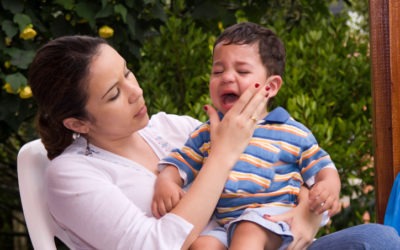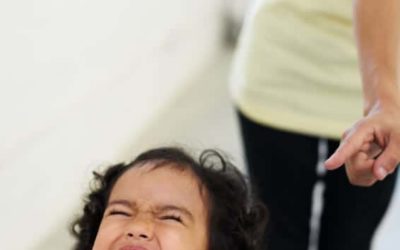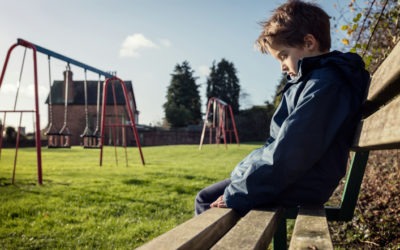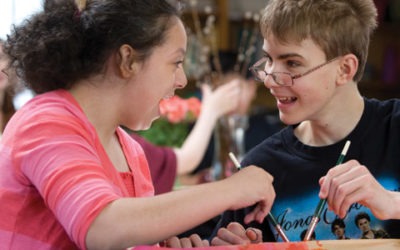The role of a parent in an individual’s mental health development and the health of our society, has never been so prevalent to me after studying the theories of Alfred Adler, Louis Cozolino, and Karen Horney. Each of these theorists agree that early childhood...
Toddler Tantrums: Help from Neuroscience
Charlie’s parents felt like they were walking on eggshells. A simple family party often set off the three year-old. The unfamiliar setting, the commotion, and relatives trying to hug and kiss the boy could easily send him into a kicking and screaming fit. Usually quiet, Charlie routinely burst into tantrums for reasons neither his parents nor his pediatrician could explain. Such difficult behaviors, meltdowns, and tantrums are a major concern for many parents and professionals. Yet most strategies to remedy problematic behaviors often fall short. Why? They are based on
Can Lack of Connection Cause Infant Death?
Dr. Louis Cozolino conveys that studying the brain alone does not provide a comprehensive analysis of human relationships, and social aspects must also be considered. “Researchers in neurobiology and neuroscience study the brain in scanners and on dissection tables...
Lessons from Spin Class: The Limitations of Encouragement
I often find great empathy and identification with my clients in an unlikely place: at the gym. In a recent spin class, my instructor noticed that I wasn’t keeping pace with the rest of the class.“Come on, try harder!” he yelled. “You can do this!” “No sir, I can’t,” said the silent voice in my head. It wasn’t a matter of mind over matter. I was trying as hard as I could with the constraints I have. You see, my limitations are invisible. I have lived my entire life with
A Nurturing Alternative to Calm-Down and Time-Out Rooms
Rose’s parents and teachers were concerned about how to help her find success in kindergarten. Sometimes she went with the flow but at other times Rose fussed so much that she disrupted the whole class. Then her teachers devised a plan that everyone thought would help. They designated a small, separate section of the classroom as the “reset room,” a place where Rose could escape for a few minutes when she felt out of control or when a teacher felt she needed calming. When her mom noticed a scratch on
Autism Acceptance: How Celebrating Differences Can Stop Bullying
It seemed like simple gesture. A college football player who was visiting a middle school spotted a red-haired sixth grader eating lunch alone, so he joined him. Then the boy’s mother posted a photo on Facebook capturing the moment: her autistic son sitting across a cafeteria table from Travis Rudolph, the Florida State University wide receiver. “This one day,” she wrote, “I didn’t have to worry if my sweet boy ate lunch alone.” The heartwarming image spread on social media, and news stories reported that after that, the boy’s popularity
Toddlers’ Mental Health: The Drawbacks of a Diagnosis
Recently a pediatrician phoned me with a concern about a three-year-old patient I see in my psychology practice. During a routine visit, the doctor said, “Karson” had bitten him. In fact, the young child had a history of behavior problems. “Do you think there’s a diagnosis?” the doctor asked me. I told her I wasn’t a fan of diagnosing toddlers. “What I can tell you,” I said, “is that he has strong reactions when people approach him too suddenly, loudly, or unexpectedly.” I was describing a phenomenon that I place
What Causes Oppositional Defiance and Challenging Behaviors?
Third in a series originating from my original post on oppositional defiance. What are the underlying causes of persistent oppositional defiance? Examining these behaviors through the lens of neuroscience provides a better understanding of what they mean and how we can help children who display them. Consider the following two children: Shortly after starting Kindergarten, “Robbie”, 5, began fighting his mother about everything from brushing his teeth to picking up his toys. When he met his teacher for the first time, he looked at his mom, grabbed a book off
Supporting Children on the Autism Spectrum
Thomas was proud of his young son “Roger’s” remarkable knowledge of birds. Roger’s grandmother, an avid bird watcher, had shared birding books and toy bird replicas with the boy when he was young, and he had shown such great enthusiasm for the topic that at age 3, Roger could identify more than 50 types of birds. But when the boy was diagnosed with autism, a therapist took a more guarded view of Roger’s intense interest. The therapist described the boy’s constant chatter about birds as “stimming”—short for self-stimulating behavior. Suddenly,









